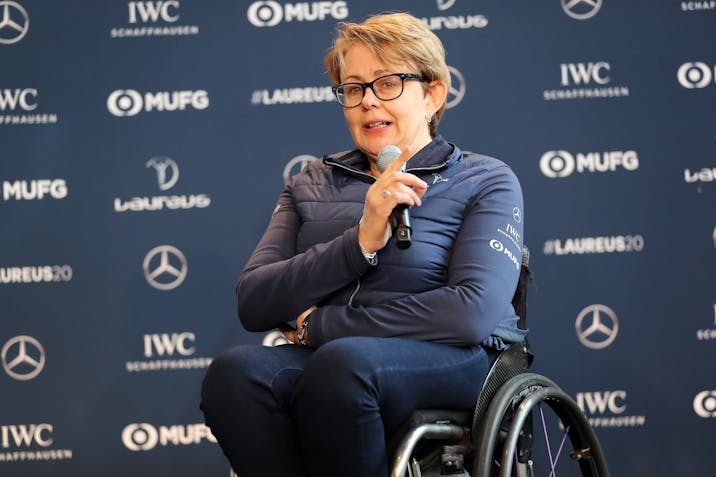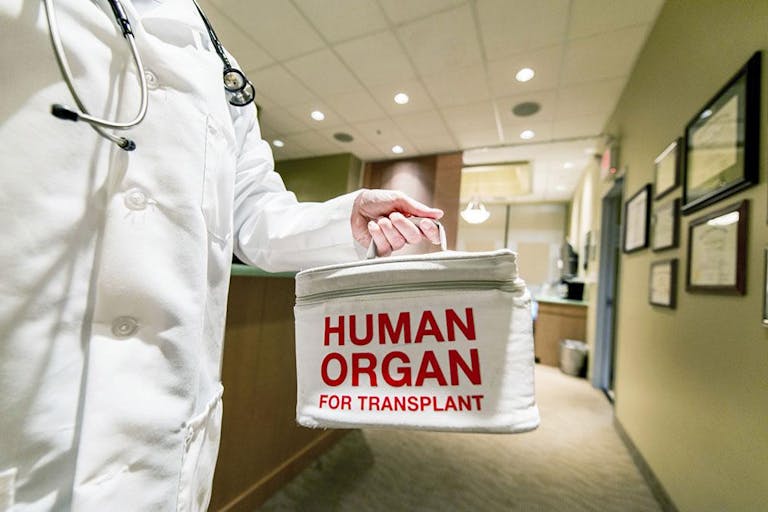
Paralympian receives abuse and harassment for opposing assisted suicide
Cassy Cooke
·
Pro-life group: Harvesting abortion patient’s organs may have thwarted investigation into her death
In a stunning report, Operation Rescue details how the investigation surrounding the death of Lakisha Wilson, who suffered cardiac arrest and died during a 2014 second trimester abortion at the Preterm abortion facility in Cleveland, Ohio, may have been thwarted due to the efforts of an organization that procured her organs for donation.
Wilson was 22 at the time of her death. Operation Rescue’s Cheryl Sullenger writes that Wilson’s death “not only raised questions about patient safety at the high-volume abortion business, but also brought to light another extremely sensitive issue… concern[ing] the high-pressure tactics of organ procurement organizations to secure organ donation consent from families….”
While the spotlight has been on Planned Parenthood and other abortion facilities for altering procedures and selling the organs of aborted children to fetal tissue procurement agencies, Operation Rescue’s Sullenger says that in Wilson’s case, the issue is that because she checked the box on her driver’s license to be an organ donor, a complete investigation into her cause of death did not happen. An autopsy on a woman whose vital organs have been removed cannot give a clear picture of what really happened during her abortion.
Sullenger also reports that during the abortion, “Wilson’s blood pressure was dropping fast,” so abortionist Lisa Perriera “finished the abortion before tending to Wilson’s dangerously escalating medical emergency. By then, Wilson had stopped breathing and suffered cardiac arrest.” It took half an hour for someone from the abortion facility to call 911. Emergency workers “were able to restart [Wilson’s] heart and provide oxygenation by ‘bagging’ her,” but somewhere between Preterm and her transfer to intensive care, Wilson was determined to be “brain dead.”

And then things went from very bad to worse. Lifebanc, a human organ procurement organization, along with a representative from Preterm, are said to have approached Wilson’s family requesting permission to harvest her organs. According to OR’s Sullenger, Wilson’s family refused on the grounds that “questions… had not been answered. How could a healthy 22-year old woman die from what everyone said was one of the safest and common surgical procedures in America? What went wrong and who was responsible?”
OR’s Sullenger further reports:
Thus began a high-pressure effort to secure the family’s permission to harvest Wilson’s organs.
Why were Wilson’s organs wanted so badly?
Since African Americans are more prone to suffering from diabetes and high blood pressure than other racial groups, they are more prone to organ failure.
It is true that organs are not supposed to be matched to donors based on race, but there are certain important blood type characteristics and tissue markers that are shared more often between people of the same racial make-up. These markers help determine transplant compatibility….
As a young, healthy African American woman, who succumbed to a lack of oxygen to the brain, Wilson’s organs would have been in high demand.
After Lifebanc “ran a search of the Ohio Bureau of Motor Vehicles Organ Donor database and discovered that Wilson had given her consent to ‘make an anatomical gift’ of her organs upon her death,” Sullenger says Wilson “wasn’t treated like a person any more. She had become a commodity.” The group “ordered testing to ensure that life support devices were properly placed and that Wilson’s organs were in good condition,” despite the fact that her family made it very clear that her cause of death was under investigation and refused to give consent for Wilson’s organs to be donated. OR reports:
Lifebanc chose to ignore Wilson’s father. Paperwork was processed that noted her father’s refusal to complete or sign any of the consent and policy forms. While Lifebanc’s actions were technically legal, they were ethically dubious.
And then…
On March 28, against the expressed wishes of her family, and knowing that there were questions about Wilson’s care and treatment during her fatal abortion, Lifebanc essentially gutted Lakisha Wilson and removed nearly every basic internal organ, including her heart, lungs, liver, gallbladder, pancreas, abdominal aorta, inferior vena cava, kidneys, ureters, adrenal glands and their adjacent connective tissue.
Thus, when the coroner, Dr. Joseph A. Felo, received what was left of Lakisha Wilson’s body, he was forced to conduct an autopsy on a partial cadaver. He also lacked the remains of Wilson’s aborted baby, and had to rely on Preterm’s medical records for certain “facts” about the supposed gestational age of her pregnancy.
It was determined that Wilson’s cause of death was “cardiac arrest resulting in brain damage from oxygen deprivation, a known complication to a therapeutic abortion.” And because this is a “known complication” to the procedure, Dr. Felo concluded that the circumstances of Wilson’s death “did not indicate medical malpractice.” But as Operation Rescue points out…
… his conclusions were based on insufficient data. Why had Wilson hemorrhaged and why wasn’t her condition treated in time by Preterm’s abortionist, Lisa Perriera? Why did she wait a half hour after Wilson stopped breathing to call 911?
Without Lakisha’s organs or her babies’ remains, there was no way to determine the full extent of complications or whether Preterm staff members were telling the truth.
Just as Wilson’s father feared if organ donation were to take place, the “suspicious circumstances” under which his daughter died would never be sufficiently explained.
To sum up, Operation Rescue notes that while organ donation saves lives and is noble, “abortion-related deaths pose unique situations that should be taken into consideration by organ donation companies”:
There is a profit motive for organ procurement companies to ignore the unique situations posed by abortion-related deaths. When this motive hinders an investigation and allows a dangerous abortionist to go free, it poses a very real moral conflict.
Live Action News is pro-life news and commentary from a pro-life perspective.
Contact editor@liveaction.org for questions, corrections, or if you are seeking permission to reprint any Live Action News content.
Guest Articles: To submit a guest article to Live Action News, email editor@liveaction.org with an attached Word document of 800-1000 words. Please also attach any photos relevant to your submission if applicable. If your submission is accepted for publication, you will be notified within three weeks. Guest articles are not compensated (see our Open License Agreement). Thank you for your interest in Live Action News!

Cassy Cooke
·
Investigative
Sheena Rodriguez
·
Newsbreak
Bridget Sielicki
·
Investigative
Carole Novielli
·
Investigative
Carole Novielli
·
Investigative
Carole Novielli
·
Issues
Kelli Keane
·
Analysis
Kelli Keane
·
Media
Kelli Keane
·
Abortion Pill
Kelli Keane
·
Politics
Kelli Keane
·